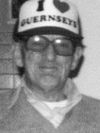 Located in one of the fine dairy areas of New York State stands the Hinman Products Milk Plant in Deansboro. The dream of a former native resident, Mr. George I. Hovey, the structure for handling milk became a reality through his planning and financial backing and a wonderful benefit to the community and the dairy farms of a large area. Its operation outlasted a Jetter plant in Oriskany Falls, Queensboro in Clinton and a plant in Waterville, also Marshall Station.
Located in one of the fine dairy areas of New York State stands the Hinman Products Milk Plant in Deansboro. The dream of a former native resident, Mr. George I. Hovey, the structure for handling milk became a reality through his planning and financial backing and a wonderful benefit to the community and the dairy farms of a large area. Its operation outlasted a Jetter plant in Oriskany Falls, Queensboro in Clinton and a plant in Waterville, also Marshall Station.
Some facts are unclear. Mr. Hovey might have built the plant to supplement the cheese factory by Oriskany Creek bridge on Rt 315 or he may have known of new methods of handling milk to make better prices for dairymen and develop milk marketing.
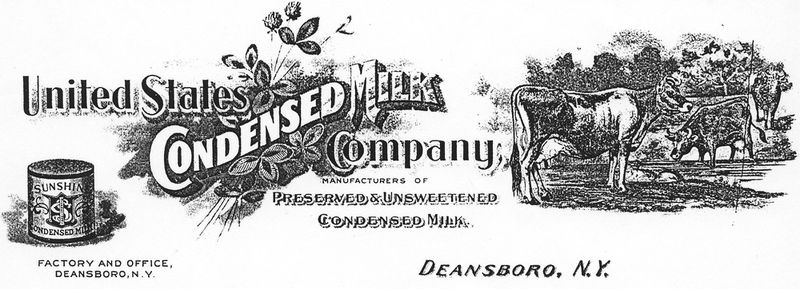
Constructed in 1902 or 1903, I have aged with it. I had understood a Grove Goodson and a Hubert Bishopp were two of the carpenters engaged on the job. Whether the original plan was for a condensary, I do not know and how much Mr Hovey operated it, I don't know that either, but it was soon purchased by the Mohawk Condensed Milk Co. which greatly increased the market demand for the farm milk supply. This company was based in St. Johnsville and owned by Frank Gilby with his son-in-law, Earl Bellinger.
Mr. Gilby owned the Philips Tin Can Co. factory and together with Bellinger established a group of 11 or 12 plants under the company name of Mohawk Condensed Milk Co, greatly enhancing the use of tin cans. Mr Bellinger invented a tin cap which sealed the top of the small cans of milk.
In 1930 he died a multimillionaire leaving a large estate to his wife and she a matron saint to the famous Chautaqua Cultural program.
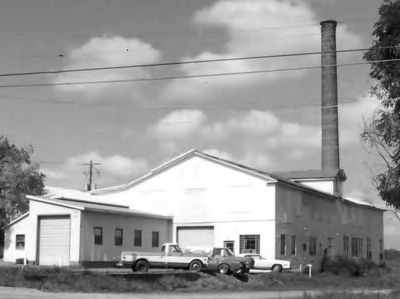 Being a method to preserve milk almost indefinitely, it greatly increased the marketability of milk but this was really a manufacturing process requiring huge storage vats, considerable machinery, carloads of cans, tons of sugar and as steam was needed in sterilizing and condensing, huge boilers were required and as the fuel was coal, soft coal was brought to the bins by rail thus showing the necessity of good rail facilities, a rail siding served the plant.
Being a method to preserve milk almost indefinitely, it greatly increased the marketability of milk but this was really a manufacturing process requiring huge storage vats, considerable machinery, carloads of cans, tons of sugar and as steam was needed in sterilizing and condensing, huge boilers were required and as the fuel was coal, soft coal was brought to the bins by rail thus showing the necessity of good rail facilities, a rail siding served the plant.
I would like to refer to four different pictures of the milk plant complex in our historical album. A 1908 label shows the sign Mohawk Condensed Milk Co across the last side of probably the original warehouse (a separate building), a picture over a 1910 label shows on the same building, same side, a sign "Home of Sunshine Condensed Milk" and a sign on the main plant "United States Condensed Milk Co." Another picture labeled 1908 shows a large warehouse erected between the factory and the street also noting it burned in 1935. In this picture the sign "Mohawk Condensed Milk" was on the east side of the factory building. Still another picture labeled 1915-1916 shows the factory and sign "M. C. M. Co." but without the warehouse, showing that if the 1915-16 label is correct, the large warehouse in front must have been constructed after 1915-16, rather than its showing in the 1908 period. When it was constructed is a guess probablly in 1918 or after which was a time that Mr. Mapes was plant superintendent. Anyway a fire wall was constructed between buildings thus making possible the saving of the main factory when the 1935 fire destroyed this warehouse.
The "Plant" was successfully managed by Superintendent Walter Mapes probably sometime between 1912 and the early '20s. Anyway by 1918 or before the company was reaching out for more milk and it maintained teams and wagons and drivers to travel established milk pick-up routes. Keston Kennard told me he travelled a route to Augusta in 1918 and there were two other drivers routing the Western Hills. How large the complete operation, I do not know but I understand a blacksmith shop was needed and Don Williams came down from the north to operate it. Later he possessed the shop next to the "Dinner Bell" (building owned by the Sehns.
Note-- The 125 ft chimney scheduled to be dropped in 1985 was probably erected in a period 1916 - 1920.
Sometime before 1918 the company constructed the stucco residence beside the site of the burned Macabee Hall for Mr. Mapes. It was steam heated by underground pipes from the milk plant boilers.
After Mr. Mapes long tenure, probably Ralph Moore held the next longest or longer management duties. Again interim managers might have been there. So probably Ralph Moore was superintendent from the early twenties to maybe the late 30's. If Hinman Bros. bought in 1933 his time was up to the early 30's. During his time the 125 ft. chimney was erected replacing the original smaller one.
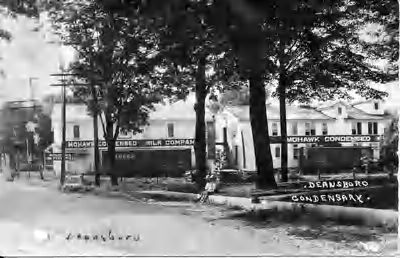 Beside the milk plant itself the company had a large ice house and at least three or four houses having built two of them. When in full operation the plant employed about 25 persons, was chief employer in Deansboro. As the N. Y. C. market for fluid milk became more lucrative, the manufacture of condensed moved farther west out of reach of the big city market.
Beside the milk plant itself the company had a large ice house and at least three or four houses having built two of them. When in full operation the plant employed about 25 persons, was chief employer in Deansboro. As the N. Y. C. market for fluid milk became more lucrative, the manufacture of condensed moved farther west out of reach of the big city market.
Note-- The Robert Marris family occupy one house, another was built on the north side of the post office and the stucco house on Rt 315.
I would like to speak of two persons associated with the plant over the span of some of the different managers. Mr. Ned Buckingham served as assistant superintendent to oversee much of the plant operation of condensed manufacturing and carry out duties to keep it running smoothly.
Under Mr. Moor's efficient management the condensary continued to prosper employing an average of 25 persons. This figure was probably true under Mr. Mapes who after leaving moved to Bergen, N.Y. to manage a Vegetable Cannery.
Over a span of years including Mr. Mapes and Moore, two important positions were filled by the same men. Ned Buckingham, a life long resident, was assistant plant manager overseeing most of the daily operations.
Mr. Hugh Pughe was chief mechanic and had charge of the huge heating system. His expertise and plumbing abilities kept the plant in satisfactory operation. The big boilers that furnished steam for sterilizing the 40 qt. milk cans and the condensing processes were coal fueled and required an expert fireman and at times a plumber which duties Hughie Pughe performed. Another feature of the plant was the shrill steam whistle which at one time was blown three or four times daily morning (2 times), noon and night and also served as the fire alarm before the present system. The heating system was changed to oil fueled heaters probably in 1940's.
Lets follow the steps the milk went through to the finished product with a label "Sweet Clover Brand Condensed Milk" and Red Cross Brand.
The farmers 40 qt. cans were placed on a roller type deck at the receiving room, emptied into a weigh vat, a sample taken for butterfat test, and patron's milk weight recorded. The vat drained to a tank ready for next patron's milk. The milk was then pumped over cold water panels for cooling, then piped into large holding tanks waiting to be cooked mixed with sugar and canned using equipment similar to bottling of fluid, then the cans were crated and readied for shipment to designated markets.
At some seasons of the year and perhaps regularly there was some N. Y. City demand for fluid milk so that milk was shipped out in 40 qt. cans on a special milk train known as the 11 o'clock passenger and milk train. To help preserve the quality of the milk cakes of ice from the big icehouse were used, distributed among the cans in the rail car for cooling. All this before automatic refrigeration.
I had formed an opinion that the Carnation Milk Co. had acquired the plant but I talked with Don Risley who said no to that and gave the date of 1933 when the Hinmans acquired the property from the Mohawk Milk Company. The Hinman Brothers (Claude and Grove) maintained the plant for fluid milk only, with one exception. They installed the equipment to produce dry powdered milk. This would take care of the fluid milk not sold directly to New York and suburbs. Either their fluid milk markets expanded or there were some troublesome kinks in the process which resulted in abandoning the operation. Alterations were made that resulted in a more convenient location for the receiving room and larger stainless steel holding tanks to load the tractor trailer tank trucks for N.Y.C. They could either drive or back into the plant where the loading could be done under cover. Those trucks sometimes brought loads of sugar syrup from N.Y.C. to the bakeries or candy makers, then returned with a load of milk.
Jack Fenimore was superintendent for many years. 1940.
In 1954 the heating system was changed to oil fuel until ill health forced him to retire. Then Charlie Williams, who had been field man and milk tester, took over Jack's job.
The plant received milk in 40 qt. cans until about 1977 when all dairymen installed farm milk tanks and the can receiving plant closed. Pick-up tank trucks were bought by the company and again this time truck routes were established with the company picking up the milk of 180 patrons.
Don Risley said he worked at the plant since 1951 and has served in many capacities about the plant having a working knowledge of all plant operations.
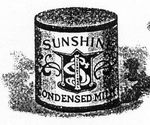 After the death of Claude and Grove Hinman, Claude's daughters, Dorothy and Phyllis, helped managed the plant in cooperation with Charlie Williams who inherited Grove's share of the plant upon the death of Charlie Williams.
After the death of Claude and Grove Hinman, Claude's daughters, Dorothy and Phyllis, helped managed the plant in cooperation with Charlie Williams who inherited Grove's share of the plant upon the death of Charlie Williams.
Dorothy and Phyllis became the owner managers of the Hinman Products Milk Plant, which has now closed on April 1, 1983 after serving the area farmers for 50 years. It has created a greater loss to the community than first impressions might indicate.